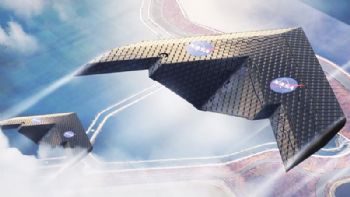
A team of engineers has built and tested a radical new kind of aircraft wing, assembled from hundreds of tiny identical pieces.
The wing can change shape to control the aircraft’s flight, and it could revolutionise aircraft production, flight and maintenance efficiency, because this new approach to wing construction offers greater flexibility.
Recently tested in a NASA wind tunnel, the wing is described in the journal Smart Materials and Structures, in a paper co-authored by Nicholas Cramer, Kenneth Cheung, Benjamin Jenett and eight others.
Instead of incorporating separate movable surfaces such as ailerons to control the roll and pitch of the aircraft, as conventional wings do, the new assembly system makes it possible to deform the whole wing — or parts of it — by
incorporating a mix of stiff and flexible components in its structure.
The tiny sub-assemblies are bolted together to form an open lattice framework, then covered with a thin layer of similar polymer material.
The result is a wing that is much lighter and more energy-efficient than a conventional design, whether made from metal or composites.
Because the structure — made of thousands of tiny triangles comprising matchstick-like struts — is composed mostly of empty space, it forms a mechanical ‘metamaterial’ that combines the “structural stiffness of a rubber-like polymer with the extreme lightness and low density of an aerogel”.
Mr Jenett said that each flight phase — take-off and landing, cruising and manoeuvring — has its own set of optimal wing parameters; a conventional wing is necessarily a compromise that is not optimised for any of these, so efficiency is sacrificed.
A wing that is constantly deformable could provide a much better approximation of the best configuration for each stage.